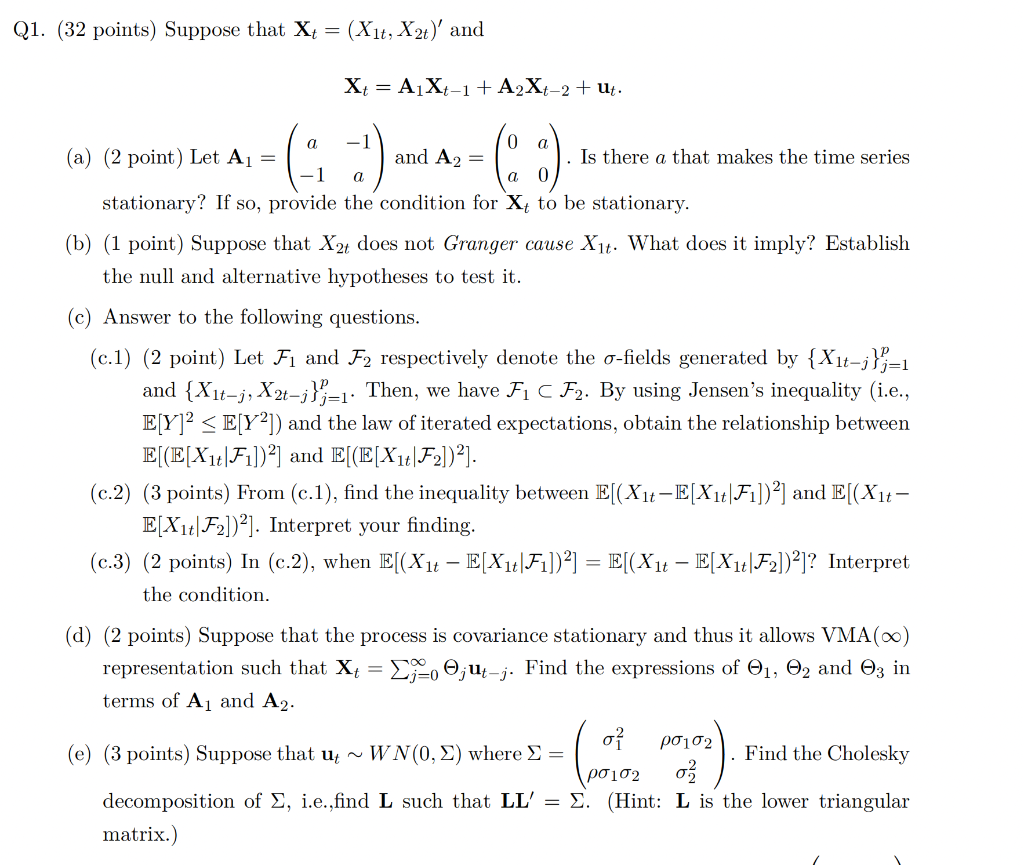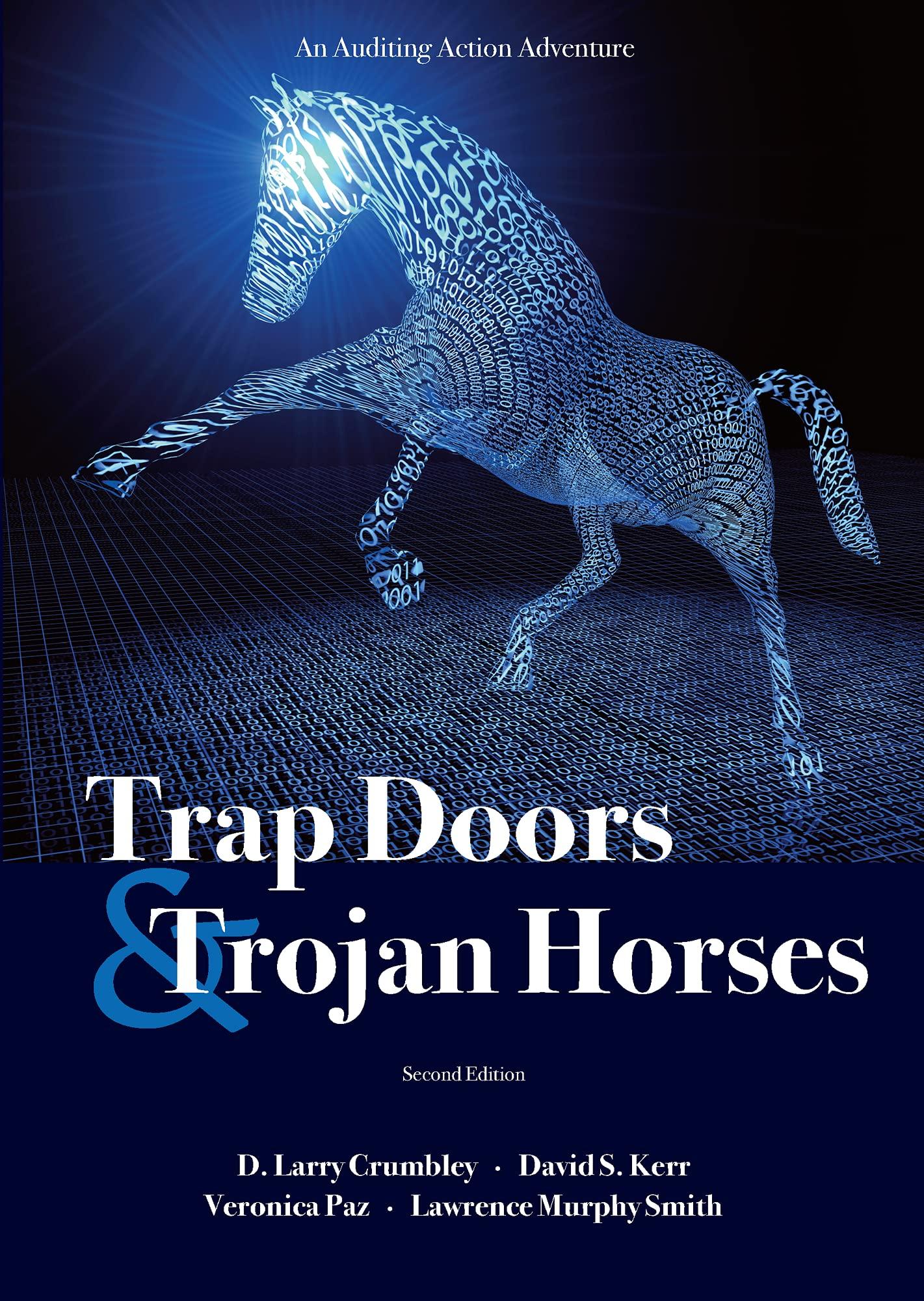
Q1. (32 points) Suppose that Xt=(X1t,X2t) and Xt=A1Xt1+A2Xt2+ut (a) (2 point) Let A1=(a11a) and A2=(0aa0). Is there a that makes the time series stationary? If so, provide the condition for Xt to be stationary. (b) (1 point) Suppose that X2t does not Granger cause X1t. What does it imply? Establish the null and alternative hypotheses to test it. (c) Answer to the following questions. (c.1) (2 point) Let F1 and F2 respectively denote the -fields generated by {X1tj}j=1p and {X1tj,X2tj}j=1p. Then, we have F1F2. By using Jensen's inequality (i.e., E[Y]2E[Y2]) and the law of iterated expectations, obtain the relationship between E[(E[X1tF1])2] and E[(E[X1tF2])2] (c.2) (3 points) From (c.1), find the inequality between E[(X1tE[X1tF1])2] and E[(X1t E[X1tF2])2]. Interpret your finding. (c.3) (2 points) In (c.2), when E[(X1tE[X1tF1])2]=E[(X1tE[X1tF2])2] ? Interpret the condition. (d) (2 points) Suppose that the process is covariance stationary and thus it allows VMA () representation such that Xt=j=0jutj. Find the expressions of 1,2 and 3 in terms of A1 and A2. (e) (3 points) Suppose that utWN(0,) where =(12121222). Find the Cholesky decomposition of , i.e., find L such that LL=. (Hint: L is the lower triangular matrix.) Q1. (32 points) Suppose that Xt=(X1t,X2t) and Xt=A1Xt1+A2Xt2+ut (a) (2 point) Let A1=(a11a) and A2=(0aa0). Is there a that makes the time series stationary? If so, provide the condition for Xt to be stationary. (b) (1 point) Suppose that X2t does not Granger cause X1t. What does it imply? Establish the null and alternative hypotheses to test it. (c) Answer to the following questions. (c.1) (2 point) Let F1 and F2 respectively denote the -fields generated by {X1tj}j=1p and {X1tj,X2tj}j=1p. Then, we have F1F2. By using Jensen's inequality (i.e., E[Y]2E[Y2]) and the law of iterated expectations, obtain the relationship between E[(E[X1tF1])2] and E[(E[X1tF2])2] (c.2) (3 points) From (c.1), find the inequality between E[(X1tE[X1tF1])2] and E[(X1t E[X1tF2])2]. Interpret your finding. (c.3) (2 points) In (c.2), when E[(X1tE[X1tF1])2]=E[(X1tE[X1tF2])2] ? Interpret the condition. (d) (2 points) Suppose that the process is covariance stationary and thus it allows VMA () representation such that Xt=j=0jutj. Find the expressions of 1,2 and 3 in terms of A1 and A2. (e) (3 points) Suppose that utWN(0,) where =(12121222). Find the Cholesky decomposition of , i.e., find L such that LL=. (Hint: L is the lower triangular matrix.)







